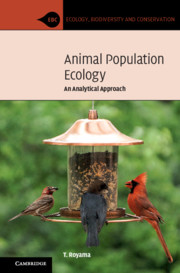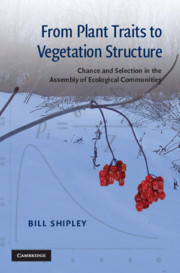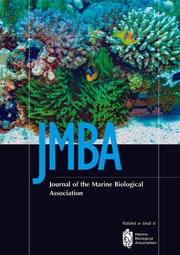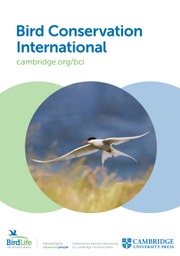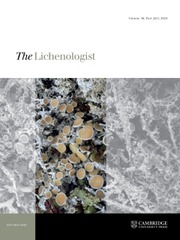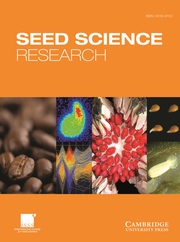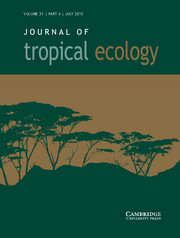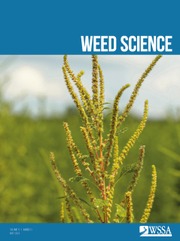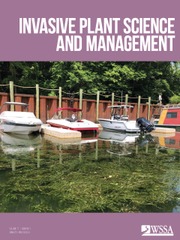The Species–Area Relationship
Theory and Application
£34.99
Part of Ecology, Biodiversity and Conservation
- Editors:
- Thomas J. Matthews, University of Birmingham
- Kostas A. Triantis, National and Kapodistrian University of Athens
- Robert J. Whittaker, University of Oxford
- Date Published: March 2021
- availability: In stock
- format: Paperback
- isbn: 9781108701877
£
34.99
Paperback
Other available formats:
Hardback, eBook
Looking for an inspection copy?
This title is not currently available on inspection
-
The species–area relationship (SAR) describes a range of related phenomena that are fundamental to the study of biogeography, macroecology and community ecology. While the subject of ongoing debate for a century, surprisingly, no previous book has focused specifically on the SAR. This volume addresses this shortfall by providing a synthesis of the development of SAR typologies and theory, as well as empirical research and application to biodiversity conservation problems. It also includes a compilation of recent advances in SAR research, comprising novel SAR-related theories and findings from the leading authors in the field. The chapters feature specific knowledge relating to terrestrial, marine and freshwater realms, ensuring a comprehensive volume relevant to a wide range of fields, with a mix of review and novel material and with clear recommendations for further research and application.
Read more- First book that focuses explicitly and specifically on the species–area relationship (SAR)
- Combines reviews of key concepts and theory with novel cutting-edge theoretical and applied research.
- Evaluates the history of SAR research, returning to its origins in the early 1900s, providing a depth of information about the development and application of SAR theory, which is hard to find in other published material
Reviews & endorsements
'Each chapter of the text is a technical paper written by researchers who have been actively exploring little-known facets of the species-area relationship that have escaped the attention of mainstream ecologists. The results of this effort are frequently interesting and occasionally surprisingly insightful. Community ecologists, landscape ecologists, and conservationists will find useful information about the species-area relationship in this volume … each chapter is presented in standard, scientific communication format. Recommended.' S. R. Fegley, Choice
Customer reviews
Not yet reviewed
Be the first to review
Review was not posted due to profanity
×Product details
- Date Published: March 2021
- format: Paperback
- isbn: 9781108701877
- length: 502 pages
- dimensions: 228 x 151 x 24 mm
- weight: 0.78kg
- contains: 21 tables
- availability: In stock
Table of Contents
Foreword Mark V. Lomolino
1. The species–area relationship: both general and protean? Thomas J. Matthews, Kostas A. Triantis and Robert J. Whittaker
2. The History of the Species–Area Relationship Even Tjørve, Thomas J. Matthews and Robert J. Whittaker
3. The multiple forms and functions of species–area relationship Thomas Matthews, François Rigal, Konstantinos Proios, Kostas Triantis and Robert J. Whittaker
4. The factors that underpin the shape of the SAR curve Even Tjørve, Kathleen Tjørve , Eva Šizlingová and Arnost Šizling
5. Functional and phylogenetic diversity–area relationships: a review Florent Mazel and Wilfried Thuiller
6. Species–area relationships in alien species: pattern and process Tim Blackburn, Phil Cassey and Petr Pysek
7. Mathematical expressions for the species-area relationship (SAR) and (the hidden) assumptions behind the models Even Tjørve and Kathleen Tjørve
8. Biodiversity scaling on a continuous plane: geometrical underpinnings of the nested species–area relationship David Storch and Arnost Šizling
9. Upscaling SARs and the connection with species abundances Luis Borda-de-Agua, Saeid Alirezazadeh, Manuela Neves, Stephen P. Hubbell, Paulo Borges, Pedro Cardoso, Francisco Dionísio and Henrique M. Pereira
10. The SAR: Is It “Produced by Laws Acting around Us”? John Harte
11. The species–area relationships of ecological neutral theory James Rosindell and Ryan Chisholm
12. The integration of the species–area relationship with mechanistic community ecological theory Robert Holt, Dominique Gravel, Adrian Stier and James Rosindell
13. The identification biodiversity hotspots using the species–area relationship Simone Fattorini
14. Using the species-area relationship to predict extinctions resulting from habitat loss Simone Fattorini, Werner Ulrich and Thomas J. Matthews
15. Using network analysis and diversity partitioning to examine the temporal dynamics of the species–area relationship Joseph Veech and Giovanni Strona
16. Does Geometry dominate extinction due to habitat loss? Athanasios Kallimanis and John Halley
17. External modulators of species-area relationships Isabel Jones, Carlos Peres, Maíra Benchimol, Anderson S. Bueno, Danielle Storck-Tonon and Ana Filipa Palmeirim
18. Applied SARs in marine systems and fisheries Karl Ugland and Alexandra Kraberg
19. Conclusions and future Directions in SAR Research Kostas A. Triantis.
Sorry, this resource is locked
Please register or sign in to request access. If you are having problems accessing these resources please email [email protected]
Register Sign in» Proceed
You are now leaving the Cambridge University Press website. Your eBook purchase and download will be completed by our partner www.ebooks.com. Please see the permission section of the www.ebooks.com catalogue page for details of the print & copy limits on our eBooks.
Continue ×Are you sure you want to delete your account?
This cannot be undone.
Thank you for your feedback which will help us improve our service.
If you requested a response, we will make sure to get back to you shortly.
×

